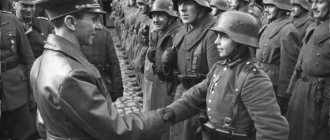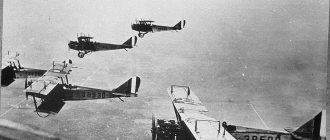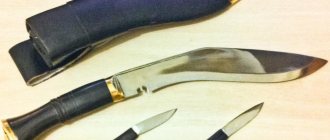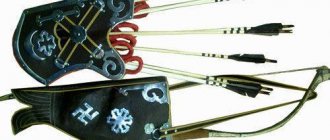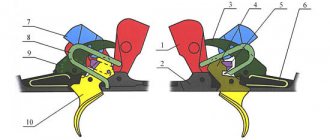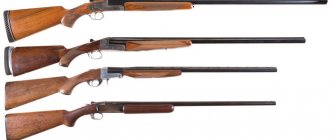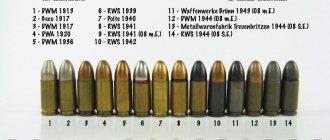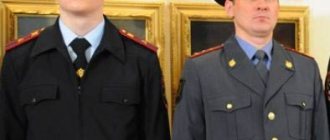Everyone is familiar with the image of a brave sailor who wears a vest and a cap. However, why does a sailor's headdress look this way? Many people ask this question, because army and other hats are significantly different from naval ones. To understand this issue, it is worth paying attention to history.
Navy hats went through a long evolution before appearing before us in their modern form. Initially, they looked completely different, and only then were adapted to the needs of sailors. It is worth talking about all these aspects in more detail.
What does the word cap mean?
The cap is a men's headdress that was widespread in the 16th - early 20th centuries in Northern and Eastern Europe (mostly among the Germans, Dutch and Russians). ... Cap m. cap with a visor; light, esp. summer hat of various types, leather or fabric, with a visor.
Interesting materials:
What is included in business reputation? What is included in computer networks? What is included in the TCO list? What is included in the calculation of the insurance period? What is included in the Northwestern Economic Region? What is included in balance sheet profit? What does paprika contain? What is included in humus? What is included in the structure of the Russian banking system? What is included in the work experience in Belarus 2022?
What is a peakless cap?
A visorless hat is a hat without a visor, part of the foragers' uniform . After minor transformations, the cap entered the sailors' wardrobe. It was officially approved as part of the sailors' equipment. Nowadays a cap without a visor is worn on special occasions and parades.
A little history
The peakless cap is the first headdress that was introduced into the official uniform of Russian sailors . The basis was the forage hat of foragers (military men responsible for procuring feed for animals). Already in 1811, the headdress was designated as part of everyday dress in the army and navy.
Distinctive features of the first model:
- lack of tape;
- emerald shade;
- availability of large numbers of fleet crews.
In the 19th century, a white cord was introduced on the cap, which can also be seen on modern models. No later than 1872, ribbons appeared. Previously, caps only had numbers with ship data. In the 70s, the official uniform was a black visor with a white ribbon. An accurate model was introduced in August 1874. In the USSR, the rules for the design of inscriptions on caps were approved in 1923.
The Guards badge and corresponding ribbon were designed in 1943. The colors of the St. George ribbon were present here: alternating black and orange stripes. The colors had special symbolism. Black denoted the smoke that appears after firing gunpowder, and orange denoted fire.
The tape served a practical function . She kept her hat on her head in strong gusts of wind. The ribbons were fastened around the neck or sailors could clamp them with their teeth. Now this element of the cap is shorter, but then its length was approximately 160 cm.
The black top of the headdress is worn in cold weather. Hats with white tops are worn in the summer . White color is impractical and gets dirty quickly. For this reason, we made covers in light colors that can be removed and cleaned.
Important! The cap at one time was considered a progressive element of the wardrobe, and therefore became part of the sailors’ uniform.
During World War II, it became clear that the visor cap was a completely impractical headdress. The hat constantly fell off my head, quickly got dirty and did not protect at all from the sun and bad weather . Some sailors completely abandoned hats, others preferred berets, caps and other practical items.
What parts does it consist of?
The design of the cap is simple. It changed depending on the time. A modern headdress has 6 main elements. Components:
- band - wraps around the crown of the head;
- crown – top element;
- edging – inscriptions;
- removable cover;
- cockade – metal badge;
- tapes.
Marine headdress
In the Navy, the visor cap was officially approved as a uniform headdress in 1921. Since then, no new orders have been received. Sailors wear caps on special occasions.
Important! At first, the name of the ship or fleet was indicated on the cap. But in 1949, important information had to be hidden. So, only the name of the fleets remained on the cap.
On the cruiser Aurora, sailors still wore hats with the name of the ship. Gradually, the tradition of naming ships is returning. Since the hat has no practical meaning, it is worn by sailors and foremen on holidays.
Popularity in Western Europe
Women's skipper cap, 2022. Jeremy Corbyn wearing corduroy violinist cap.
By the 1880s, caps of this type were widespread in Greece and featured a decorative cord. chin strap, and distinctive black embroidered visor band.[7] The traditional costume for many residents of coastal Greek villages, including a hat, crew-neck sweater, baggy trousers, and high boots, featured in the film adaptation of The Cannon of Navarone
as a disguise for British agents.[8] A black or dark blue variant with a white crown known as Tellermutzen was also often worn by university students in Germany, Denmark and Sweden from the turn of the century to the present day.
Great popularity
A marine cap (white) is a favorite attribute of members of various yacht clubs and owners of small ships. In port cities, such a “captain” has long turned into a traditional tourist souvenir. Many manufacturers add their own insignia to these hats. Caps are usually made of cotton and are equipped with embroidered patches made on automatic machines. The cockade is decorated with gold cord and buttons with anchors. Of course, such items should only be washed by hand.
The accessory is also popular among organizers and participants of sea parties. Sometimes they are decorated with additional metal fittings.
Main details
The naval uniform, of course, presupposes the mandatory presence of this headdress. First of all, it is a serious attribute of power over the elements, control of the ship, and authority among the captain’s subordinates.
Marine uniforms withstand a wide variety of weather conditions. And the cap, of course, also becomes the ship’s owner’s faithful companion.
Its main elements include a cockade, band, crown, piping, welt and visor. Also, the attribute must have a special insert made of a steel hoop. While wearing it, it allows you to maintain and maintain the shape of the headdress.
Modern use
A Rastafarian cap combining the visor and rim of a Greek fisherman's cap with the knitted wool body of a traditional Jamaican tam.
In the 1950s, black leather versions of the Greek fisherman's cap were popular among the Thin Boy and Cute subculture, due to their use by Marlon Brando in Wild
[13] They appear in Warriors as part of the Rogue gang's uniform. Similar caps, decorated with chains and metal studs, were worn by many participants in the 1970s. black source movement as an alternative takes.[14] At the same time, a knitted gray or black version, reminiscent of wool. The Rasta hat, with a leather visor, has gained popularity among some Jamaican Rastafari expatriates in the UK and US to accommodate their dreadlocks.[15][16]
During the mid to late 1960s, the Greek fisherman's cap became coveted. a counterculture accessory for both sexes, as it was used by the Beatles during their US tour, and by folk musicians such as Bob Dylan, Woody Guthrie, and Donovan. [ failed verification
] The cap has experienced a revival among young Britons.
hipster women in the late 1990s, and again during the 2010s due to nostalgia for 1970s fashion.[ citation needed
]
What other version exists?
The next version apparently comes from the legend described above. It says that the red pom-pom is necessary in order to protect sailors from head blows. After all, ships have very low ceilings, so sailors often hit them.
It is believed that in this way they took care of the safety and comfort of the crew on board. How true this is is unknown. Moreover, now no one can say for sure why pom-poms were invented. This remains a mystery.
Other meanings of capless visor
The cap is a cap. Its main feature is the absence of a visor. It is part of the sailors' uniform, which is why the part is used with the adjective "sailor's". The headdress is associated with a cap, sailors, and sailors.
Different meanings of a cap:
- the main meaning is a sailor's cap without a visor;
- the military dictionary expands this term, indicating that cadets, sailors, junior commanders of many countries used a cap, and in the USSR the navy or school was indicated on the ribbon;
- in the fashion industry, headwear is presented not only for sailors, but also for children;
- in the encyclopedia there is only one meaning - headdress in the army and navy.
Important! For sailors, a visor is not only part of the uniform, but also a reason for pride and respect. Such a cap was worn by heroes who created the history of the country. The headdress appeared in many literary works, songs, and films.
Symbol of maritime brotherhood
Black and orange St. George ribbons began to be used after July 20, 1878. They were rewards and were awarded only to those sailors who had accomplished some feat in the service. Many were awarded such ribbons in the Black Sea Fleet for the defense of Sevastopol in 1854-55. After the 1917 revolution, a lot changed, including in the navy.
The St. George ribbons were then removed. The stigma has also changed. Now only the name of the fleet was indicated. However, sailors of battleships, destroyers and cruisers still put the names of their ships on the ribbons. The St. George ribbons were returned to the fleet during World War II. As before, they became a reward symbol emphasizing the soldier’s services to the fleet and the Fatherland.
From the history of the peakless cap
The headdress in the navy went through a long path of changes until, finally, the cap appeared. The first headdress of a Russian sailor was a soft felted hat with a brim, which was introduced into the navy at the beginning of the eighteenth century. The hat was simple and comfortable and hardly differed from those that peasants wore in the villages. The hats lasted in the navy for over 150 years, having undergone a number of changes during this time. In the mid-nineteenth century, hats were abolished.
Grenadier cap of naval battalions. 1764-1796
At the very end of the nineteenth century, Paul I introduced grenadier hats into the navy. They reached 30 centimeters in height and were very uncomfortable. At the beginning of the nineteenth century, another, no less inconvenient headdress was introduced - a shako, which was like a small bucket expanding towards the bottom. One can imagine how grenadiers and shakos interfered in battle, restricting the movements of the sailors.
Shako of the naval guards crew. 50s 19th century
Leading representatives of the army and navy, and primarily Suvorov and Ushakov, perfectly understood the harm of these fruits of admiration for foreignness. They fought against Prussianism all their lives. At the beginning of the nineteenth century, the cap appeared.
In military formations there were special people - foragers, whose duties included the procurement of food and fodder for cavalry units. The caps they wore were a pointed cloth cap, bent in half, and resembled modern caps.
Over time, the cap changed its cut and adopted all the elements of a modern peakless cap, that is, a band and a crown. In November 1811, it was introduced as a casual, everyday headdress in all parts of the army and navy.
The history of the ribbon
The origin of this sea symbol has several stories.
The first dates back to ancient times, when man bowed to the elements. Before sending off their relatives on a voyage, the wives or mothers of fishermen gave satin ribbons embroidered by them. Words of prayers for a speedy return or simply words of love were embroidered there.
Such ribbons were a kind of amulet for fishermen. It was believed that they helped them in the fight against the elements and saved them from misfortunes. There are several legends that tell how a fisherman blessed with a ribbon managed to escape during a flood, while his other comrades died.
Also, during long voyages, sailors collected their long hair with ribbons, on which they wrote their seafaring qualities. For example, the tape could say "Invincible" or "Don't touch me."
Another story about the appearance of ribbons among sailors tells how, during the time of the first navy, the British laid siege to a Dutch fortress. For greater confidence, they tied ribbons to their hats with the inscription “Undaunted.” However, they failed to break through the siege and retreated before the well-protected Dutch army. But the tradition of tying hats with ribbons subsequently spread to other navies.
Navy history mentions the wearing of a mourning ribbon. Then the sailors serving in the English fleet tied black ribbons to their hats in memory of Admiral Nelson during the funeral procession.
Peakless cap in modern maritime traditions
Today, the cap is considered one of the important elements of the naval uniform; it is a statutory headdress. It is kept after service in the navy and worn on holidays dedicated to the Navy. This is a source of pride for sailors. Moreover, this invention, which originated in the Russian fleet, has found recognition in other countries of the world.
Thus, sailors wear visorless caps, as this headdress has become traditional for the Russian fleet. The capless visor is more convenient than all other solutions; it does not get blown away by the wind, since it does not have a visor. The tradition of wearing it has survived to this day.
If you find an error, please select a piece of text and press Ctrl+Enter.
Hats from “A to Z”, or the Big Hat Dictionary
"A"
The academic square cap is a ceremonial headdress for graduates of higher educational institutions following the British model of education. The academic cap is a square board with a tassel in the center, attached to a small cap, traditionally black with a yellow or gold tassel.
"B"
Bandana is a small scarf or scarf; initially, bandanas had a purely practical meaning, used by American cowboys during cattle drives. The bandana was tied around the neck and, if necessary, covered the face to protect against dust. Now the bandana is a traditional attribute of bikers.
As an example - a pirate bandana.
Bashlyk is a military, Cossack headdress. It is a pointed cloth hood, worn in bad weather over some kind of headdress to protect “from cold, rain and the heat of the sun.” It has long bladed ends for wrapping around the neck.
A baseball cap is a cap originally worn by baseball players. Before the advent of the baseball cap, the headgear of a baseball player was a straw boater hat and a jockey cap.
A beret is a soft, voluminous headdress without a visor, known since the Middle Ages. The beret is widely used in the military. A woman's beret can be felt, embroidered or knitted. Also beret - artist's headdress
The beret is widely used in the military. A woman's beret can be felt, embroidered or knitted. Also beret - artist's headdress
The peakless cap is the headdress of sailors, armies and navies of many countries. The visorless cap is a cap hat without a visor.
Bolivar is a type of cylinder with wide straight brims.
Mentioned in the novel in verse by Alexander Sergeevich Pushkin “Eugene Onegin” (1823-1831).
While in morning dress,
Wearing a wide bolivar
Onegin goes to the boulevard
And there he walks in the open space,
While the watchful Breget
Dinner won't ring his bell.
Bomber is a youth model of winter headwear with long ears and sheepskin trim.
Boyarka is a men's fur hat of an old Russian style. Consists of a fur top, velvet cap and silk lining. The fur top was made of sable, beaver or white, as well as sheepskin.
Boyarka was worn by F.I. Chaliapin, in which B.M. depicted him in his painting. Kustodiev.
A Breton cap is a type of cap made of wool. Traditionally considered a sailor's headdress because the Breton cap was part of the uniform of French sailors. The name comes from the word “Brittany” - this is the name of the historical region of France, occupying a peninsula in the north-west of the country.
In Russia, the Breton cap was called a “cap”; it was worn by both military and ordinary people.
Budenovka is a Red Army soldier’s headdress in the form of a helmet. According to the idea of the authors of the headdress (according to some sources, the author of the sketch of the budenovka is the artist Kustodiev), the shape of the budenovka repeats the shape of the steel helmet of a Russian warrior of the 15th century, emphasizing heroism and greatness.
"IN"
A wreath is flowers or leaves woven into a tight ring. The round shape of the wreath and the living component symbolize eternity, constancy, endless life, and connection with the divine nature. Perhaps this is why the wreath in many cultures became a symbol of royal power (the crown came from it). In the Slavic lands, the wreath also acquired the meaning of love.
A veil is a small hat with a veil, more like an accessory than a hat, usually attached to the hair with clips or a hat elastic band.
A veil is a thin transparent mesh that is attached to women's hats.
"G"
Galero is a cardinal's hat, a very large flat red hat with a wide brim, with 15 tassels hanging from the sides of the brim of the hat. The galero is the heraldic distinction of the rank of cardinal.
Gangster hat is a felt hat with a brim, has three dents on the crown (top and sides), in fact it is the same fedora hat (see “fedora” below), which was very popular with gangsters.
Gogol is a mouton cap in the form of a cap with a deep longitudinal crease. It was popular among the Russian intelligentsia of the early 20th century.
"D"
Double-cornered hat - Napoleon's hat, a two-cornered hat that replaced the more bulky cocked hat. Until the First World War, the bicorne hat was part of the ceremonial clothing of officers and officials, including in Russia.
A diadem is a head decoration in the form of a crown (wreath). The tiara is not closed into a ring; in some cases, the tiara does not have a crown, but is attached to the hairstyle.
"E"
The yarmulke is a traditional Jewish men's headdress. A round cap that fits tightly to the head; a small cap worn under the outer hat by Jews.
"AND"
Jockey is a tight-fitting hat-helmet with a visor. Jockey is the headdress of a horse rider.
"Z"
Umbrella Hat - a headdress in the form of an umbrella, holds tightly on the head and protects from the rain.
"AND"
Indian headdress - representing a crown of eagle feathers. The traditional headdress of the Indians, worn on special occasions, was less often worn for hunting.
"TO"
Kamilavka is a headdress in the Orthodox Church of red, purple or black in the form of a cylinder expanding upward.
Boater is a French straw hat of a rigid shape with a cylindrical crown and straight brim. Since the beginning of the 20th century, it has been a popular men's headdress and fashion accessory for several decades.
Cappello Romano - literally "Roman hat" or saturno (Italian saturno; because the hat resembles the planet Saturn in its appearance) - a round hat with a wide brim and a hemispherical crown, worn by the Catholic clergy.
A bonnet is a woman's headdress that combines the features of a cap and a hat. The bonnet has a high hat crown (for hair pulled back at the back of the head) and wide, stiff brims framing the face, tapering towards the back of the head.
A hood is a folding headdress sewn or fastened to the collar of outerwear.
Kartuz is a type of cap. Caps were widely used in European armies of the 15th-17th centuries. Later, caps came into use among the civilian population. (Also see "Breton cap" above)
A helmet is a protective helmet for military personnel, as well as a means of protecting the head for categories of people operating in dangerous conditions (miners, builders, speleologists, rescuers, athletes, paratroopers, motorcyclists, and so on).
A cap is a light cap, personal protective equipment for construction and repair, which is not intended to protect against injury.
Also a casquette is a female headdress that covers the ears, but opens the back of the head (in the form of a voluminous headband covering the ears).
A cap is a type of cap with a small straight horizontal visor.
A cap is a type of cap with a hard bottom and a long, wide, straight visor.
Cowl - a monk's headdress. It consists of a kamilavka (a cylinder with cropped brims) and a “basket” - a black blanket (made of silk or other black-colored materials).
A cloche is a bell-shaped hat that came into fashion in the 1920s. The name comes from the French word cloche - bell. A cloche is a small hat with a small drooping brim.
A cowboy hat is a felt, leather or straw hat with a high, rounded crown, concave at the top, and a wide brim, turned up at the sides. It is an attribute of American cowboys and ranchers, as well as country music performers.
Kokoshnik is an ancient Russian headdress in the form of a comb (fan or rounded shield) around the head, a symbol of Russian traditional costume.
A cap is a cone-shaped or rounded headdress. There are different types of this headdress: Jester's or fool's cap (formerly worn by jesters, sometimes with bells). The hat can also be a chef's hat.
As an example - Santa Claus's hat.
The Confederate is a national Polish headdress with a quadrangular top. Because of its quadrangular top, the “academic cap” is sometimes called a confederate cap.
A crown is a headdress that is a symbol of monarchical power. Crowns were made from various precious metals (usually gold or silver) and decorated with precious and semi-precious stones.
A scarf is also a scarf, which is a piece of fabric in the shape of an isosceles triangle. Distributed almost all over the world. It is the national headdress of Russians, Ukrainians and some other peoples.
A bowler hat is a European men's hat of a hemispherical shape with small brims made of hard felt.
Kubanka - a low cylindrical fur hat with a flat top - is the uniform headdress of the Cossack troops. Before World War II, it was a popular men's headdress in the Kuban, and in the 80s of the 20th century it came into fashion as a women's winter hat.
"L"
A ski cap is a headdress (cap) sewn from elastic fabric or knitted that fits tightly to the head, often with a pom-pom.
"M"
A mask is a headdress that covers not only the head, but also the face. A hat-mask (also called a balaclava) is intended for climbers, lovers of winter hunting and fishing, or for people who spend a long time outdoors in winter.
Meningitis is a small elegant hat that was fashionable in the 50s; the hat was so small that it did not warm the head at all.
Miter is a headdress, part of the vestments of Christian clergy.
"N"
A mosquito net is a hat with a net worn over the head and face to protect against mosquitoes, small flies, midges and other flying insects.
"ABOUT"
A headband (or hoop) is a hair accessory in the form of a half ring that secures the hair.
Hunting hat - the main feature of this hat is two visors, front and back, and two side fold-down “ears”. Visors protect your face and neck from the sun. The hat's ears can either be folded back and tied under the chin to protect the wearer from cold weather and strong winds, or tied at the top to stay out of the way. The checkered pattern of the fabric serves as camouflage.
The hunting hat is also known as the Sherlock Holmes hat.
"P"
Panama - a light hat with elastic brim; straw or sewn from light natural fabrics.
Papakha is a men's fur (sheepskin or astrakhan) headdress, an element of a military uniform. The hat is common among many Slavic peoples, in Russia among the Cossacks. Papakha is also common among the peoples of the Caucasus and Central Asia.
A wig is artificial or real hair that is placed on the head like a hat, creating the hairstyle for which it is made.
A cap is a headdress in the form of a light cap flattened on the sides. A cap can be an element of military uniform and various uniforms.
A scarf is a piece of cloth, usually square or triangular, used as a headdress.
“Girl in a headscarf” by A.G. Venetsianova
Pork Pie (or Pork Pie) is a hat that looks like a bowl: a low, almost cylindrical crown with a hollow reminiscent of a pie tuck (pork pie - pork pie) ...
"R"
The Fisherman's Hat is an olive-colored Panama hat with fishing hooks and lures suspended from a strap around the hat.
"WITH"
Slouch was once the name of a popular women's hat made of felt with down-curved brims and a rounded, low crown.
Straw hat - any hat woven from straw with a wide brim. This type of hat is designed to provide protection from the sun and possible sunstroke.
Sombrero is a wide-brimmed hat with a high cone-shaped crown and usually with the brim edges rounded upward. Part of the Mexican national costume.
"T"
A tablet is a small women's hat without a brim with a round or oval cylindrical crown.
Tweed hat is a hat made of woolen fabric - tweed. Tweed fabric is soft to the touch, with a small pile, usually twill (diagonal) weave, sometimes melange, often with colored knots.
Tiara - crown, originally the tiara was the headdress of the Pope.
The Tyrolean hat is a traditional headdress in the alpine region of Tyrol, which formerly occupied parts of Northern Italy and Austria. A hat with a trapezoidal crown, a soft longitudinal fold at the top and narrow brim, straight at the front and rolled up at the back.
Tok is a brimless headdress that resembles a pillbox hat, but has a higher crown.
A cocked hat is a hat with the brim curved so that it forms three corners. It became widespread in the second half of the 17th century and was popular until the end of the 18th century, until it was replaced by a bicorne hat.
A trilby is a type of fedora hat that has a narrower brim and a low, trapezoidal crown with one notch in the center and two on the sides.
Skullcap - round or square, pointed or flat, men's or women's light cap, worn directly on the head; received its name from the Turkic word tobe/tyube, meaning the top of the head or the top of a mountain. The skullcap is an integral part of the Uzbek national costume, usually decorated with embroidery and beads.
Turban - see "Turban" below.
"U"
Ushanka is a winter fur (originally for men) hat, a widespread headdress in Russia.
"F"
Veil - a light women's head covering; wedding headdress.
Fedora is a hat with a medium-width brim and a trapezoidal crown with one hollow in the center and two on the sides. The classic fedora is made of soft felt.
The fez is a headdress in the Ottoman Empire; it is a red woolen cap with a blue or black, silk, silver or gold intertwined tassel.
A felt hat is a headdress of any shape with a brim, made of felt.
Finka is a flat, round type of winter hat with a fur descending band (back of the head) covering the ears and neck.
Floppy is a wide-brimmed hat. This can be either a beach option made of dyed or natural straw, or a wide-brimmed hat made of felt.
A cap is a headdress with a hard visor and a stable band. It was a uniform headdress in the armed forces and departments of various states.
"X"
Hijab - in Islam it is any clothing (from head to toe), however, in the Western world, hijab is understood as a traditional Islamic women's headscarf.
Homburg is a men's hat made of felt with a highly curved brim and a ribbon along the crown; the crown has one longitudinal hollow in the center.
"C"
A top hat is a men's headdress, which is a tall hat with a flat top and small brim. Top hats were common as everyday headwear throughout the 19th century.
"H"
A turban is a headdress in the form of a piece of fabric wrapped around the head, common among a number of peoples of North Africa, the Arabian Peninsula, India and Asia.
Cap - a women's and children's (bonnet) headdress in the form of a hood that covers the hair; may have ties under the chin.
"SH"
Shapoklyak - (French chapeau claque) - (chapeau) chapo - hat and (claque) klyak - slap, blow with the palm of the hand; men's headdress, a type of cylinder, its peculiarity is that it could be folded.
A cap is a knitted or knitted headdress that fits tightly to the head. Recently, hats with a veil have come into fashion.
A wide-brimmed hat is a headdress with wide brims, soft or hard. The crown can have any height and shape.
A helmet is a piece of protective equipment for military personnel, designed to protect the head from damage caused primarily by bladed weapons, and later by firearms.
Sherlock Holmes Hat - See "Hunter's Hat" above.
"E"
The Ecuadorian Panama is a lightweight hat with elastic brims made of a special type of straw - toquilla. Panama is the national headdress of Ecuador.
Ecuadorian Panama hats are woven from the leaves of the Carludovica Palmata palm tree, which grows only in the coastal mountainous regions of Ecuador.
"YU"
Lawyer's hat , see "Academic cap" above.
"I"
Japanese headdress , Kasa (kasa) - cone-shaped hat. It originated in Japan in ancient times due to the monsoon climate with long rainy seasons. Kasu is woven from straw, bamboo, reeds, and sedge. There are many different types and shapes of these hats. Traditionally, the kasa is associated with samurai.
Differences between the Russian cap and the foreign one
In the USA, a white Panama hat is used as a visor cap.
It does not have ribbons or inscriptions, which is typical for its Russian counterpart. The headdress of American sailors was approved during World War II and has not been changed since then. Americans use white Panama hats as part of their everyday outfit. They are called “Donald Duck” caps, based on their resemblance to the hat of the popular cartoon character.
In Great Britain, the name of the ship was indicated on Panama hats. But during World War II, for reasons of secrecy, the embroidery was removed. This was replaced by a simple HMS inscription. The letters indicated that this fleet belonged to the monarch. These were necessary secrecy measures .
In Germany, the name of the ship was also removed from the caps. The sailors wore blue caps. Such models gradually moved away from the everyday look and became part of the ceremonial attire . A white cover is put on top and a metal badge in the colors of the German flag is attached. A little higher you can see the embroidered national symbol - the eagle.
How to sew a Cossack kubanka with your own hands (pattern)
Do-it-yourself bouquet of socks (step-by-step photos)


